Chiropractic care provides a natural, non-invasive way to manage and prevent lower back pain and sciatica, ensuring that pain doesn’t hold you back from leading the life you want. In this post, we’ll explore the causes of lower back pain and sciatica, how the two conditions are linked, and how chiropractic care can help keep you moving freely.
Understanding Sciatica and Lower Back Pain
Lower back pain is one of the most prevalent health issues worldwide, affecting millions of people. It can arise from poor posture, extended sitting, improper lifting techniques, overuse, too much exercise, accidents/incidents, or even stress. A more severe form of lower back pain is sciatica, which occurs when the sciatic nerve is compressed or irritated
What is Sciatica?
Sciatica is a condition that affects the sciatic nerve, the longest nerve in the body, which runs from the lower back through the hips and down the legs. When this nerve is pinched or inflamed, it can cause:
• Sharp, shooting pain radiating down one leg
• Numbness or tingling in the lower back, buttocks, or leg
• Muscle weakness in the affected leg
• Difficulty standing or walking for long periods
Sciatica can be triggered by various factors, including herniated discs, spinal misalignment, or prolonged sitting -all common issues.
How Are Sciatica and Lower Back Pain Linked?
Sciatica and lower back pain are closely connected because sciatica often originates from issues in the lower back. In many cases, chronic lower back pain is an early warning sign of sciatic nerve compression. Some key ways the two conditions are linked include:
• Herniated Discs: A bulging or herniated disc in the lower spine can press on the sciatic nerve, causing both lower back pain and sciatica symptoms.
• Spinal Misalignment: If the spine is out of alignment, it can create imbalances that irritate nerves and lead to both general lower back pain and sciatic nerve compression.
• Muscle Tightness: Tight muscles in the lower back, especially the piriformis muscle, can press on the sciatic nerve and trigger pain in both the back and legs.
• Inflammation: Chronic inflammation in the lower back can affect nearby nerves, leading to radiating pain down the sciatic nerve.
Because sciatica is a symptom of an underlying issue in the lower back, treating lower back pain early can prevent sciatic nerve irritation from developing into a more serious problem.
How Chiropractic Care Can Help
Chiropractic care focuses on restoring spinal alignment, reducing nerve irritation, and promoting natural healing. Unlike pain medications that only mask symptoms, chiropractic treatments target the root cause of discomfort, providing lasting relief.
Chiropractic Adjustments for Sciatica and Lower Back Pain
One of the most effective ways chiropractors treat sciatica and lower back pain is through spinal adjustments. These adjustments help:
• Realign the spine to reduce pressure on the sciatic nerve
• Improve flexibility and mobility in the lower back
• Reduce inflammation and muscle tension
• Enhance nerve function and circulation
By correcting spinal misalignments, chiropractors relieve nerve compression, which is often the primary cause of both lower back pain and sciatica.
Spinal Decompression Therapy
For those suffering from sciatica due to a herniated or bulging disc, spinal decompression therapy can be highly beneficial. This technique gently stretches the spine, creating space between the vertebrae and relieving pressure on the affected nerve.
Spinal decompression can be especially helpful for digital nomads who sit for prolonged periods, as extended sitting can increase disc pressure and exacerbate sciatica symptoms.
Soft Tissue Therapy and Muscle Work
Chiropractors often incorporate soft tissue therapy to relieve muscle tension that contributes to back pain. Techniques like:
Massage therapy – Helps relax tight muscles and improve circulation.
Trigger point therapy – Targets specific muscle knots that may be compressing the sciatic nerve.
Myofascial release – Reduces stiffness and restores normal movement patterns.
Dry Needling
These therapies can counteract the effects of prolonged sitting, heavy lifting, and repetitive movements, which often contribute to lower back pain and sciatica.
Postural Corrections and Ergonomic Guidance
Poor posture is a leading cause of both lower back pain and sciatica. Chiropractors provide guidance on:
• Proper laptop positioning to reduce strain on the spine
• Best sitting positions to maintain a healthy posture
• How to carry backpacks and luggage without stressing the lower back
• Standing desk recommendations for digital nomads who need flexible workspaces
Making small adjustments to how you sit, stand, and carry weight can prevent future pain and discomfort.
Lifestyle and Movement Recommendations
Staying active is essential for spinal health. Chiropractors often recommend:
• Frequent breaks to avoid sitting for too long
• Walking and light exercise to keep the spine mobile
• Strengthening the core to support the lower back
By incorporating movement into your daily routine, you can prevent stiffness and maintain spinal flexibility.
Why Chiropractic Care is Ideal for Lower Back Pain & Scicatica?
• It’s Non-Invasive – No medications or surgeries required.
• Provides Immediate Relief – Many patients experience reduced pain after just a few sessions.
• Enhances Mobility – Essential for an active, on-the-go lifestyle.
• Supports Long-Term Spinal Health – Regular adjustments keep the spine aligned and functioning properly.
Sciatica and lower back pain don’t have to interfere with your lifestyle. Chiropractic care provides a natural, effective solution that targets the root cause of pain, restores mobility, and allows you to keep exploring pain-free.
If you’re experiencing sciatica or lower back pain, consider visiting a chiropractor. Your body will thank you!
Would you like to book an appointment with a chiropractor near you? Contact us today to start your journey to a healthier, pain-free life!

